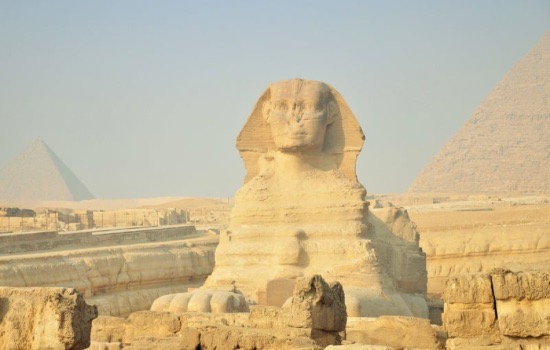To the Egypt's pyramids are one of most impressive buildings and iconic elements of human history.
They were built thousands of years ago and still remain a mystery today in terms of how they were built and why they were built.
To better understand the historical context behind the pyramids, you have to go back in time to the ancient Egyptian civilization.
Ancient Egyptian civilization was a complex society and highly organized that developed on the banks of the Nile River, in northeast Africa, about 5 thousand years ago.
However, the Egyptian economy was based on agriculture, and the floods of the Nile River were fundamental to the success of the harvest.
Therefore, Egyptian society was highly dependent of the Nile and developed a rich and complex culture around the river.
Ancient Egyptians believed in a pantheon of gods, and religion played an important role in their everyday life.
Egyptian society was led by pharaohs, who were considered deities on earth and exercised absolute control over the Egyptian people.
The first pyramids built
It was during the Old Kingdom (2686-2181 BC.) that the first pyramids were built. However, these pyramids were built as tombs for the pharaohs, with the belief that the pharaoh's soul would be transported to the afterlife through the pyramid.
The pyramids were built from large blocks of stone and required an incredible amount of manual labor.
They were usually surrounded by temples and other structures that served as places of worship for the Egyptian gods.
The most famous pyramids in Egypt are the Pyramids of Giza, built during the fourth dynasty (2613-2494 BC).
The largest of them is the Pyramid of Cheops, which was built in about 20 years and has a height of 147 meters.
It is believed that more than 100 thousand workers were used in the construction of the pyramid, however it is made up of around 2.3 million stone blocks.

However, in addition to the pyramids, the ancient Egyptian civilization also is known for her achievements in areas such as architecture, art and writing.
The ancient Egyptians developed a writing system Hieroglyphic symbols, however, were composed of hundreds of different symbols and were used to record Egyptian history and religion.
Egyptian art was also highly symbolic, as artists often used images of gods and pharaohs in their works.
Ancient Egyptian civilization left a lasting legacy for humanity, and his achievements continue to inspire and fascinate people around the world.
The pyramids of Egypt are a notable example of his skill in building monumental and lasting structures, and continue to be a symbol of the rich and complex Egyptian culture.
Curiosities about the Pyramids of Egypt
The pyramids of Egypt are one of the wonders of the ancient world and, to this day, they still awaken the curiosity and the fascination of people from all over the world.
Here are some interesting facts about the pyramids of Egypt:
For the great Pyramid of Giza is the oldest of the Seven Wonders of the Ancient World and the only one that still exists today.
The pyramids were built over a period spanning three millennia, from the 27th century BC to the 13th century BC
It is believed that more than 100 thousand workers were used in the construction of the Pyramid of Cheops, and it is believed that construction took about 20 years.
The pyramids were built without the use of cement or mortar, but rather with large blocks of polished stone that were carefully cut and placed one on top of the other.
The Pyramid of Cheops is the largest of the pyramids, with a height of 147 meters. It was the tallest structure in the world for more than 3,000 years.
The material used for construction
The pyramids were originally covered with a coating of white limestone, which was removed to be used in other constructions.
The Great Pyramid of Giza is the only pyramid to contain internal chambers., including the King's Chamber and the Queen's Chamber.
The position of the pyramids in relation to the stars is considered as a notable example of the astronomical knowledge of the ancient Egyptians.
There are many theories about how the pyramids have been built, but none of them have been completely proven.
Some of the theories include the use of ramps, floating stone blocks, and even help from aliens.
The pyramids are also famous for their curses. According to legend, those who disturb the tombs of pharaohs are cursed with bad luck and premature death.
However, this curse It is generally seen as a superstition.
The pyramids of Egypt remain a mystery and a wonder of the ancient world.
They are a testament to the skill and ingenuity of the ancient Egyptians as they continue to inspire and fascinate people around the world.
Conclusion
The Egyptian pyramids are one of the most most impressive of humanity, both in its magnitude and in its complexity.
They represent the wealth of culture and knowledge of the ancient Egyptians and are a testimony to the human capacity to achieve great feats.
Although many questions still remain unanswered, the pyramids remain an iconic symbol of Egypt's history and one of the most popular tourist destinations in the world.



